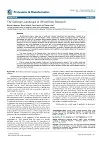(Bio)Informatics plays a major role in (prote)omic research experiments and applications. Analysis of anentire proteome including protein identification, protein quantification, detecting biological pathways, metaboliteidentification and others is not possible without software solutions for analyzing the resulting huge data sets. Inthe last decade plenty of software-tools, -platforms and databases have been developed by vendors of analyticalhardware, as well as by freeware developers and the open source software community. Some of these softwarepackages are very much specialized for one (omic) topic, as for example genomics, proteomics, interactomics ormetabolomics. Other software tools and platforms can be applied in a more general manner, e.g. for generatingworkflows, or performing data conversion and data management, or statistics. Nowadays the main problem is notto find out a way, how to analyze the experimental data, but to identify the most suitable software for this purpose inthe vast software-landscape.
This review focuses on the following issue: How complex is the link between biology, analysis and (bio)informatics, and how complex is the variety of software tools to be used for scientific investigations, starting frommicroorganisms up to the detection of a proteome. Thereby the main emphasis is on the variety in software for (LC)MS(/MS) proteomics. In the World Wide Web sites like ExPASy show extensive lists of proteomics software, leavingit to the user to identify which software actually serves their purposes.
First we consider the huge variability of software in the field of proteomics research. Then we take a closer lookon the variability of MS data and the incompatibilities of software tools with respect to that. We give an overview overcommonly used software technologies and finally end up with the question, whether open source software would notadd more value to this field.
